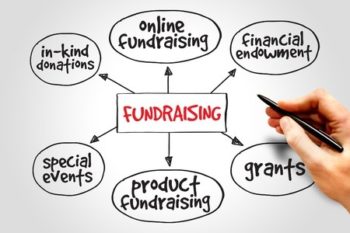Nonprofit Marketing: How to Construct a Powerful Brand and Boost Assistance
Nonprofit Marketing: How to Construct a Powerful Brand and Boost Assistance
Blog Article
Recognizing the Crucial Components of Nonprofit Fundraising: Secret Practices for Enhancing Financial Sustainability
Nonprofit fundraising is a complex venture that needs a nuanced understanding of numerous necessary components to guarantee monetary sustainability (nonprofit agency). From strategic planning that straightens with mission-driven objectives to the farming of significant donor relationships, each component plays a crucial function in the overall success of fundraising initiatives. Moreover, the combination of effective communication and area involvement methods boosts outreach and impact. However, the adoption of technology provides both possibilities and obstacles that can dramatically influence fundraising outcomes. What specific techniques can companies implement to navigate these complexities and secure their monetary future?
Strategic Fundraising Planning
Strategic fundraising planning is an important component for any not-for-profit company aiming to accomplish its goal efficiently. This process includes setting clear, measurable goals that straighten with the organization's overall objectives while considering the distinct needs of the area it offers. A well-structured fundraising plan not just recognizes potential profits sources however also lays out the strategies and approaches necessary to involve those sources.

Moreover, leveraging information analytics can educate decision-making by giving understandings right into contributor actions and trends, enabling nonprofits to customize their fundraising strategies as necessary. Regular testimonials and updates of the fundraising strategy are crucial to respond to changing conditions and arising chances. Inevitably, a detailed tactical fundraising plan offers as a roadmap for nonprofits, fostering financial security and enabling them to meet their goal properly.
Building Contributor Relationships
Structure solid donor relationships is crucial for the lasting sustainability of any type of not-for-profit company. These connections are the structure whereupon effective fundraising initiatives are constructed, as they foster count on, loyalty, and engagement amongst fans. Nonprofits have to prioritize cultivating meaningful links with their benefactors, recognizing that each interaction can substantially affect their willingness to contribute.
To efficiently construct benefactor connections, organizations need to concentrate on individualized involvement strategies. This involves comprehending the passions, motivations, and providing patterns of private donors, making it possible for customized interaction that resonates with them. Normal updates on business development, program results, and the influence of contributions reinforce the worth of their support.
Additionally, sharing thankfulness is essential. Recognizing contributions promptly and genuinely not just improves connections however additionally encourages continuous assistance. Occasions such as donor appreciation gatherings give possibilities for personal connections and area building.
Eventually, nurturing contributor relationships goes beyond transactional interactions; it embodies a collaboration where donors feel valued and integral to the goal. By spending time and sources in relationship-building, nonprofits can boost contributor retention, boost life time providing, and guarantee monetary security for their campaigns.
Efficient Communication Approaches
Reliable interaction methods play a critical function in reinforcing the solid donor partnerships that nonprofits aim to grow. Constant and clear messaging is essential for sharing the objective, vision, and impact of the organization. Expressing the unique worth suggestion helps benefactors recognize just how their payments make a concrete distinction.
Utilizing numerous interaction networks-- such as emails, social networks, e-newsletters, and imp source in-person events-- makes certain that messages reach a diverse audience - nonprofit agency. Tailoring communication to various contributor sections can improve interaction; for instance, significant contributors may value detailed reports on financing appropriations, while smaller sized benefactors may like concise updates highlighting essential achievements
Narration is an additional effective tool in nonprofit interaction. Sharing compelling narratives about recipients can stimulate emotional feedbacks and foster a much deeper connection with the reason. Transparency regarding financials and program results constructs count on, motivating benefactors to remain involved gradually.
Engaging the Neighborhood
Neighborhood involvement is vital for nonprofits seeking to intensify their impact and foster a feeling of ownership amongst local stakeholders. Establishing a robust link with the community not only enhances presence yet likewise builds depend on, critical for sustainable fundraising initiatives. By actively entailing area members in decision-making processes, nonprofits can straighten their goals with the requirements and ambitions of the populace they offer.
To efficiently involve the community, nonprofits must prioritize transparency and open interaction. Holding public online forums, workshops, and informative sessions allows for purposeful discussion, where stakeholders can voice their viewpoints and add to the company's vision. Moreover, working together with local services, colleges, and civic companies can produce synergistic partnerships that utilize shared sources for higher influence.
Another essential facet of community engagement is recognizing and celebrating regional contributions. Recognizing advocates, contributors, More Bonuses and volunteers cultivates a feeling of belonging and commitment, motivating ongoing participation. Furthermore, showcasing success stories and the substantial benefits of community assistance can motivate others to add.
Inevitably, proactive community interaction grows a network of supporters who are invested in the not-for-profit's objective, making sure lasting support and boosted financial sustainability.
Making Use Of Technology and Devices

One vital tool for nonprofits is a detailed donor administration system. These systems make it possible for companies to maintain thorough documents of contributor contributions, preferences, and interactions, helping with personalized communication and engagement (nonprofit agency). Furthermore, making use of on-line fundraising platforms allows nonprofits to reach a broader target market, making it easier for supporters to contribute via different networks, consisting of social media and email projects
In addition, the use of project monitoring devices can assist simplify internal processes, guaranteeing that fundraising groups stay organized and concentrated on their goals. Automation software application can likewise simplify recurring jobs, such as sending thank-you emails or suggestions, maximizing team time for even more strategic Homepage initiatives.
Conclusion
In conclusion, the crucial components of not-for-profit fundraising include critical planning, strong contributor connections, reliable interaction, area interaction, and the usage of technology. These components jointly add to boosting monetary sustainability and resilience within not-for-profit organizations.
Moreover, leveraging information analytics can inform decision-making by giving understandings right into donor habits and patterns, permitting nonprofits to tailor their fundraising methods as necessary.Building strong donor partnerships is important for the long-lasting sustainability of any type of not-for-profit company.Efficient interaction techniques play a pivotal role in reinforcing the strong contributor connections that nonprofits make every effort to cultivate.One important tool for nonprofits is an extensive contributor administration system.In final thought, the necessary elements of not-for-profit fundraising include calculated planning, strong contributor partnerships, effective communication, area interaction, and the use of modern technology.
Report this page